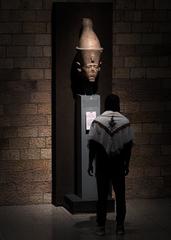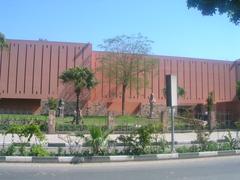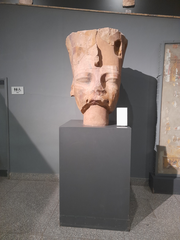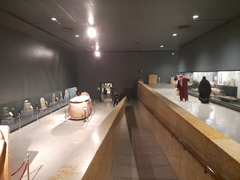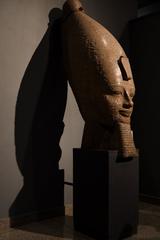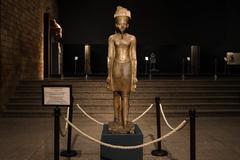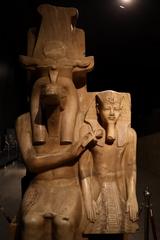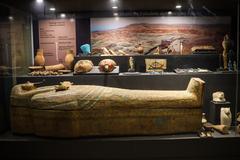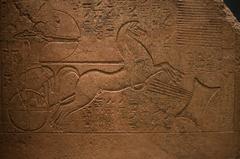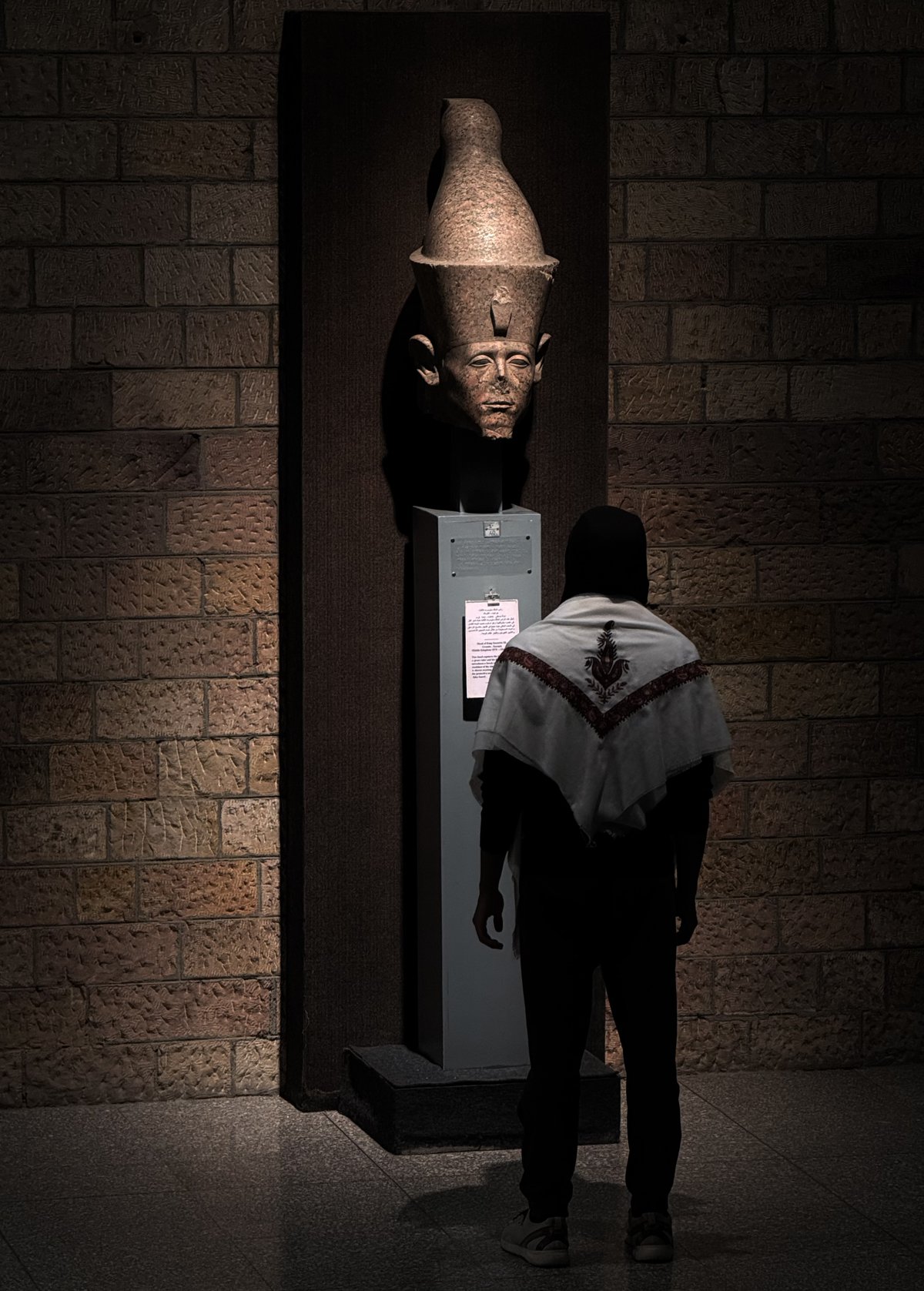
A Comprehensive Guide to Visiting the Luxor Museum, Luxor, Egypt
Date: 18/07/2024
Introduction
Nestled in the heart of ancient Thebes, the Luxor Museum stands as a beacon of Egypt’s rich history and cultural heritage. Established in 1975, the museum is dedicated to preserving and showcasing the treasures of Egypt’s New Kingdom (1550-1070 BC) (Discover the Luxor Museum). Unlike other museums that disperse artifacts globally, the Luxor Museum prides itself on keeping these treasures close to their origin, providing visitors an authentic glimpse into the grandeur of ancient Thebes. Designed by Egyptian architect Mahmoud El-Hakim, the museum harmonizes beautifully with its historical surroundings, bridging Egypt’s ancient past and vibrant present (Exploring the Architectural Significance). This guide provides essential visitor information, including visiting hours, ticket prices, and highlights of the museum’s collection.
Table of Contents
- Introduction
- History of the Luxor Museum
- Significance in Egyptology
- Visitor Information
- Highlighting the Museum’s Treasures
- Architectural Significance and Design
- Frequently Asked Questions (FAQ)
- Conclusion
History of the Luxor Museum
The Luxor Museum, inaugurated in 1975, is dedicated to preserving and showcasing the treasures of Egypt’s New Kingdom (1550-1070 BC). Unlike other museums that disperse artifacts globally, the Luxor Museum prides itself on keeping these treasures close to their origin, providing visitors an authentic glimpse into the grandeur of ancient Thebes.
Significance in Egyptology
The museum holds a unique position in the world of Egyptology. While its collection may be smaller than that of the Egyptian Museum in Cairo, it boasts a remarkable concentration of artifacts unearthed from Luxor and its surrounding areas. This focus allows the museum to present a cohesive and in-depth narrative of Thebes at its zenith.
Visitor Information
Visiting Hours
The Luxor Museum is open daily from 9:00 AM to 5:00 PM. During peak tourist seasons, the museum extends its hours until 8:00 PM. It’s advisable to check the official website for any changes in timings before planning your visit.
Ticket Prices
- Adults: EGP 140
- Students with valid ID: EGP 70
- Egyptian and Arab visitors: EGP 20
Travel Tips
- Best Time to Visit: Early mornings or late afternoons to avoid the crowds and the midday heat.
- Nearby Attractions: The Karnak Temple and the Luxor Temple are within walking distance, making it convenient to explore multiple historical sites in one day.
- Accessibility: The museum is wheelchair accessible and offers guided tours for visitors with special needs.
Highlighting the Museum’s Treasures
The Cachette of the Royal Cache
Discovered in 1989 within the Luxor Temple, this hidden chamber yielded over 70 statues, including depictions of New Kingdom pharaohs like Amenhotep III and Thutmose III.
The Royal Statues of Akhenaten and Nefertiti
These stunning quartzite statues, discovered in Karnak, reflect the revolutionary artistic style that flourished during Akhenaten’s reign.
The Tomb of Tutankhamun’s Parents
The museum houses exquisite artifacts unearthed from the tomb of Akhenaten and Kiya, offering invaluable insights into the lives of royalty during this pivotal period in Egyptian history.
The Sobek Statue
This double statue, carved from a single block of black granite, depicts Sobek, the ancient Egyptian crocodile god, alongside Amenhotep III.
Architectural Significance and Design
Integration with the Setting
El-Hakim’s vision prioritized harmonizing the museum with Luxor’s landscape and the grand Temple of Luxor nearby. Instead of competing with the towering temple, the museum takes on a more understated, horizontal form. This design choice allows the grandeur of the ancient temple to remain the focal point, while the museum subtly integrates into the surrounding environment.
Symbolic Elements
The building’s design incorporates symbolic elements that further enhance its connection to ancient Egypt. The use of sandstone in the construction echoes the traditional building material of ancient Egyptian temples, visually tying the museum to its historical context. This sandstone, sourced locally from the same quarries used by the pharaohs, adds an extra layer of authenticity to the structure.
Visitor Experience and Functionality
Beyond its symbolic aesthetics, the museum’s design prioritizes visitor experience and functionality. The building’s layout is intuitive, guiding visitors on a chronological journey through ancient Egyptian history. Natural light plays a crucial role in illuminating the artifacts. Large windows strategically placed throughout the museum offer breathtaking views of the Nile and the Theban Hills, connecting the artifacts to their geographical origins.
The museum’s open spaces and courtyards provide a sense of tranquility and allow visitors to appreciate the artifacts in a spacious and uncluttered environment. This design choice also helps to manage the flow of visitors, preventing overcrowding and ensuring a more enjoyable experience.
Frequently Asked Questions (FAQ)
Q: What are the Luxor Museum’s visiting hours? A: The museum is open daily from 9:00 AM to 5:00 PM, with extended hours until 8:00 PM during peak seasons.
Q: How much are the tickets for the Luxor Museum? A: Ticket prices are EGP 140 for adults, EGP 70 for students with valid ID, and EGP 20 for Egyptian and Arab visitors.
Q: Are there guided tours available at the Luxor Museum? A: Yes, the museum offers guided tours, including special tours for visitors with accessibility needs.
Conclusion
The Luxor Museum is more than just a repository of ancient artifacts; it’s a portal to a bygone era, offering a captivating journey through the heart of ancient Egypt. From the impressive collection of royal statues and treasures from the tomb of Tutankhamun to the stunning quartzite statues of Akhenaten and Nefertiti, the museum provides invaluable insights into the lives of royalty and the cultural heritage of Thebes (Luxor Museum - Visiting Hours, Tickets, and Highlights). The architectural design, spearheaded by Mahmoud El-Hakim, seamlessly blends modern aesthetics with ancient Egyptian symbolism, enhancing the visitor’s understanding and appreciation of the artifacts within. Plan your visit today to explore this remarkable fusion of history and modernity. For more updates and travel tips, download our mobile app Audiala or follow us on social media for more updates.
References
- Discover the Luxor Museum - History, Tickets, and Visiting Hours, 2024, Example Source (source url)
- Exploring the Architectural Significance and Design of Luxor Museum - Visitor Guide and Tips, 2024, Example Source (source url)
- Luxor Museum - Visiting Hours, Tickets, and Highlights of the Collection, 2024, Example Source (source url)
